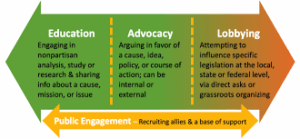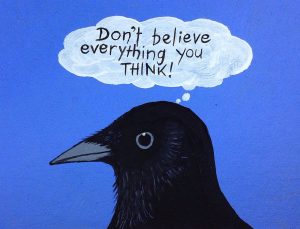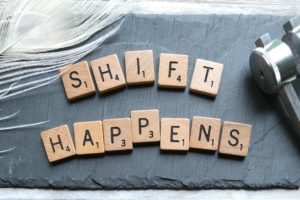We advocate every day to advance issues we care about. What makes it personal is that it builds on our own experiences, beliefs and biases.
Advocacy is defined as the act or process of supporting a cause or proposal. Advocacy may be a big “A” or a small “a” effort. Whether the cause is personal to you or common among many, the underlying process is the same. We see a need, gather evidence, find solutions, demonstrate impact, and make the case to decision makers. We advocate every day, formally and informally. We advance causes for ourselves and others in the workplace, for our children at school, and for our community. What makes the process personal is that advocacy always starts with the individual, with our unique built-in beliefs and biases.
Advocacy is a continuum of engagement with education on one end and lobbying on the other.
A presentation to the school board on new research about arts education would be considered education. When we make the case to decisionmakers for greater student access to the arts through changes in programs and scheduling, we are advocating. When we engage in action alerts and write/call our legislators about a specific bill or budget item, we are engaged in grassroots lobbying.
Motivation
Motivation for engaging in advocacy typically falls into three areas: the personal, professional or philosophical. If I ask my principal for an increased budget for musical instruments, my motivation may be a blend of all three:
- Personal (I want to be successful in my job.)
- Professional (I want my students to be successful.)
- Philosophical (I believe that every student has the right to a complete education that includes the arts.)
Most arts ed stakeholders have a touchstone experience that has shaped their passion for the arts—a reason to be involved in the work. It’s important to understand how those early experiences motivate our actions and also be self-aware enough to know how our messages will be received. Be aware that when we tell a story, we are revealing ourselves. If a request is perceived as too self-serving by decision makers, too motivated by personal self-interest, then it will have less chance of success.
Bias
There is a new reckoning around bias as a result of the Black Lives Matter movement. We must dig deep and acknowledge our own unconscious bias about race, class, sex, gender, age, and ethnicity. We must also be careful about the bias of exceptionalism.
The arts and arts teachers have been segregated from other subject areas due to practical issues (teacher release time) as well as facility separations (space requirements and equipment). Arts educators often feel isolated in their building and do not have the same joint planning time that other disciplines enjoy. Arts classes are often called “specials” and arts educators “specialists.” All of which may lead inadvertently to an attitude of exceptionalism or specialness.
Ironically, decades of making the case for the unique attributes of arts in our schools may have resulted in a side effect of separating the arts from larger educational issues, making it more difficult to be viewed as part of the whole. Widen the lens to include broader educational values and outcomes, all while keeping the arts focus crystal clear.
Obstacles
The arts ed field is coming around to the idea that advocacy is part of our everyday, not only when we want/need something. Yet, we’re good at putting it off. Most commonly listed barriers to advocacy and possible solutions:
- Lack of Time –> A quick phone call or email is often all that’s needed.
- Lack of Knowledge –> Ask a friend; develop reliable go-to resources.
- Fear of reprisal –> Tread lightly; frame as a question, not a demand.
- Someone else will do it (SEWDI) –> If not you, then who?
- My voice doesn’t count (MVDC) –> Yes, it does.
Lean In
Local decision-making rules the day concerning what is taught in our schools. If you’re wondering where to lean in, this is it. Local advocacy has both immediate and long-term potential impact. Advocacy is a long game, with relationships at its core. You can make a real difference here. New research reveals that principals have an outsized impact on students and schools. A simple conversation today will lay the foundation for tomorrow’s support.
Strengthen your advocacy chops– for educators, community members, and parents:
- Build relationships with decisionmakers.
- Leverage good news stories for greater impact, locally and on social media.
- Listen to and understand the concerns of decision makers.
- Join your professional association!!!
- Join your district’s planning team.
- Adopt a district resolution affirming the importance of the arts.
- Attend school board meetings.
- Urge parent booster organizations to take on a stronger advocacy role.
Help
We are fortunate to have power lifters at the national and state level who are sifting through the issues, providing information and talking points, and telling us when to act. They have the national and state policy and budgetary issues covered, so you can rely on them for guidance. The National Association of Music Merchants (NAMM) and the National Association for Music Education (NAfME) have provided much of the heavy lifting in the public policy arena. Each organization is skilled in mobilizing constituencies for action at the appropriate time.
- National Association for Music Merchants (NAMM)

- National Association for Music Education (NAfME)
- National Association for Art Education (NAEA)
- Educational Theatre Association (EdTA)
- National Dance Education Organization (NDEO)
- Americans for the Arts (AFTA)
- Your state professional educator association
- Your state arts ed advocacy coalition
- Your state arts advocacy coalition
 At the end of the day, engaging in advocacy is a gut check, reminding us what is important to us personally, as human beings and as members of a global community. Advocacy works. It doesn’t mean you’ll win all the time; however, it does mean that every conversation, every op-ed, social media post, call and letter will move arts education forward. And give us hope for the next day, and the next, and the day after that…
At the end of the day, engaging in advocacy is a gut check, reminding us what is important to us personally, as human beings and as members of a global community. Advocacy works. It doesn’t mean you’ll win all the time; however, it does mean that every conversation, every op-ed, social media post, call and letter will move arts education forward. And give us hope for the next day, and the next, and the day after that…
Feature photo by Henar Langa on Unsplash





